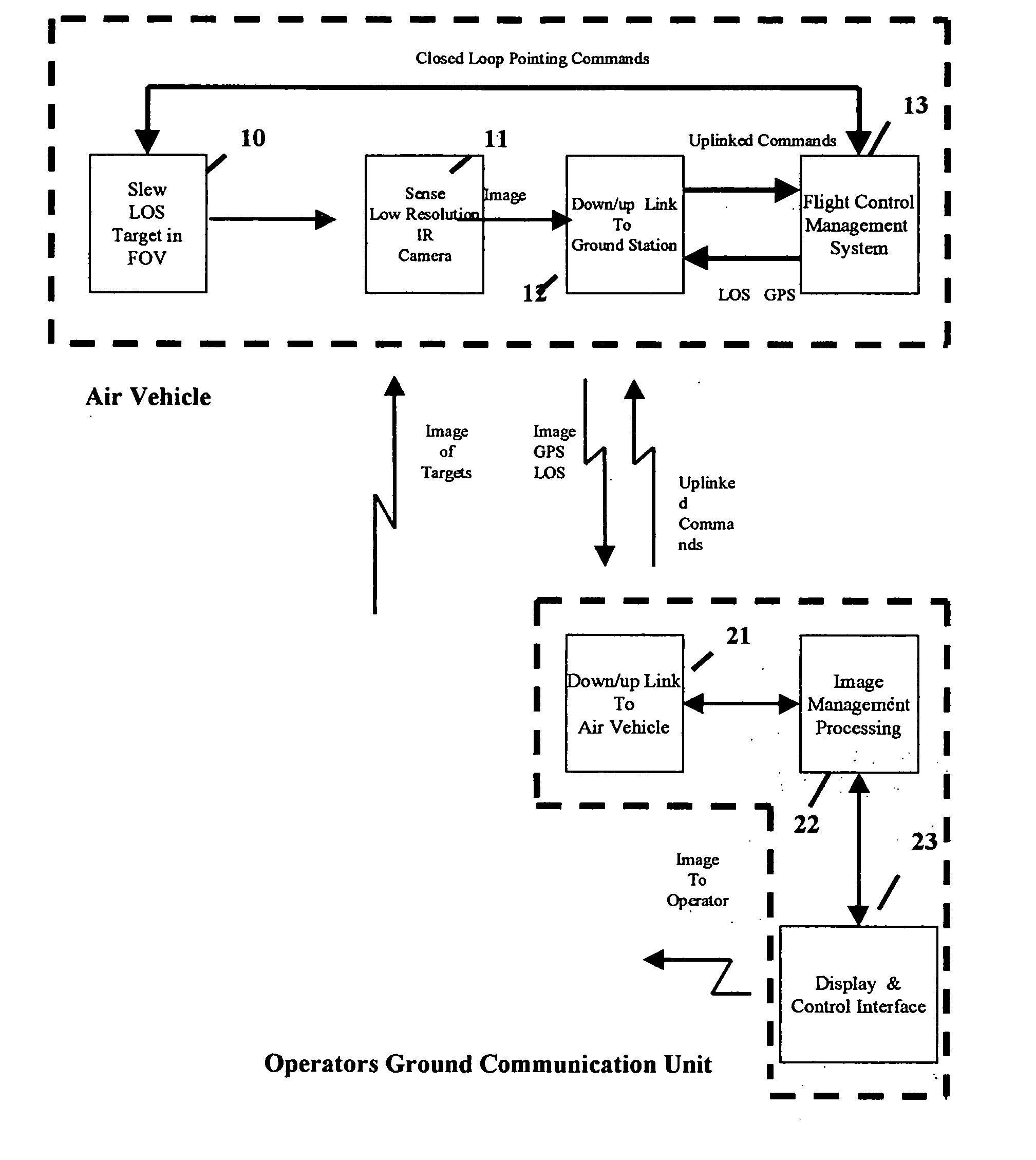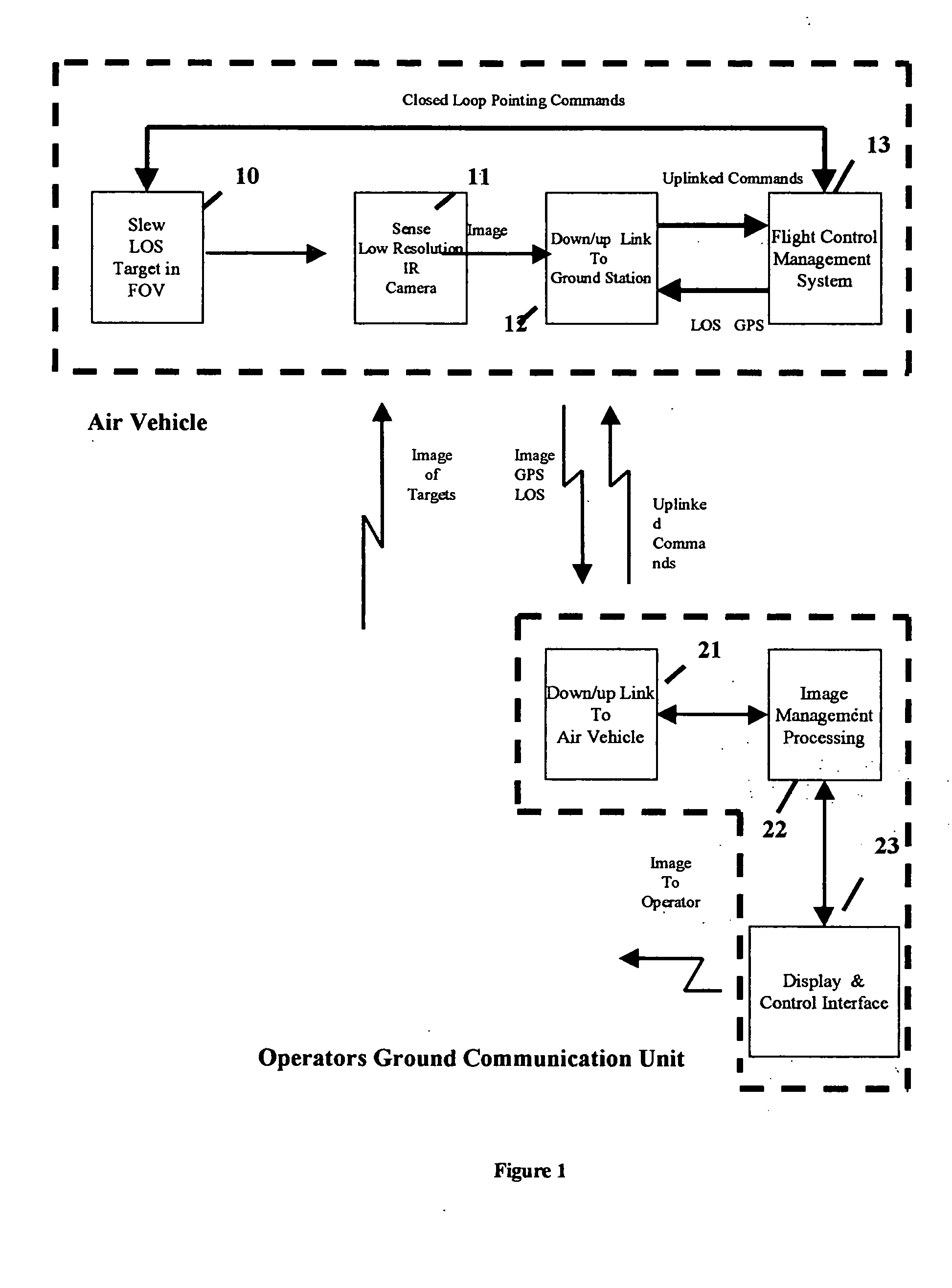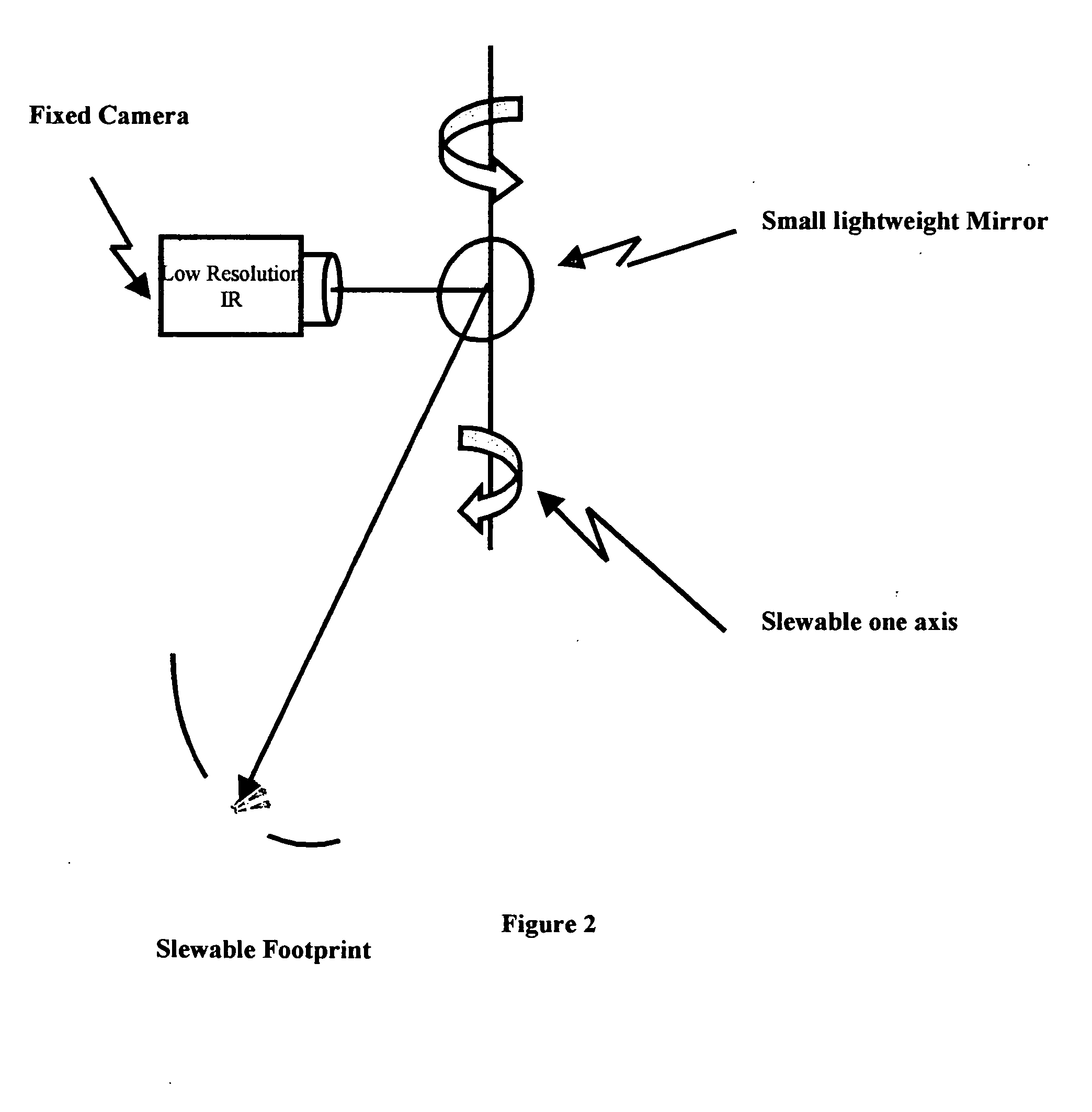Remote image management system (RIMS)
a technology of image management system and remote image, applied in the field of object detection, recognition and location systems, can solve the problems of increased sensitivity at the cost of increased size and weight, and high operating cos
- Summary
- Abstract
- Description
- Claims
- Application Information
AI Technical Summary
Benefits of technology
Problems solved by technology
Method used
Image
Examples
Embodiment Construction
[0027] Referring to FIG. 1, System Block Diagram, LOS slew device, 10 is a lightweight device which enables the Line of Sight of the sensor to be directed to an area of interest. This device may consist of a lightweight mirror rotatable on a single axis or a 3 axis tilt and pan mechanism. The control of the LOS slew device may be either automatic through preprogrammed direction from the FMS 13 or by control of the operator on the ground. LOS slew device is described in more detail in FIG. 2. Slewing of the LOS, can be accomplished using the single axis mirror technique shown in FIG. 2. A 3 axis pan and tilt mechanism may also be employed. A stabilized 3 axis gimbal mechanisms are generally too heavy to be accommodated in a MUAV.
[0028] The LOS sensor 10, will be coupled with the aircraft attitude in pitch, yaw, and roll (which is under control of the Flight Management system) to provide a LOS pointing capability of a three axis gimbal with the cost, power, and weight savings of a si...
PUM
 Login to View More
Login to View More Abstract
Description
Claims
Application Information
 Login to View More
Login to View More - R&D
- Intellectual Property
- Life Sciences
- Materials
- Tech Scout
- Unparalleled Data Quality
- Higher Quality Content
- 60% Fewer Hallucinations
Browse by: Latest US Patents, China's latest patents, Technical Efficacy Thesaurus, Application Domain, Technology Topic, Popular Technical Reports.
© 2025 PatSnap. All rights reserved.Legal|Privacy policy|Modern Slavery Act Transparency Statement|Sitemap|About US| Contact US: help@patsnap.com



